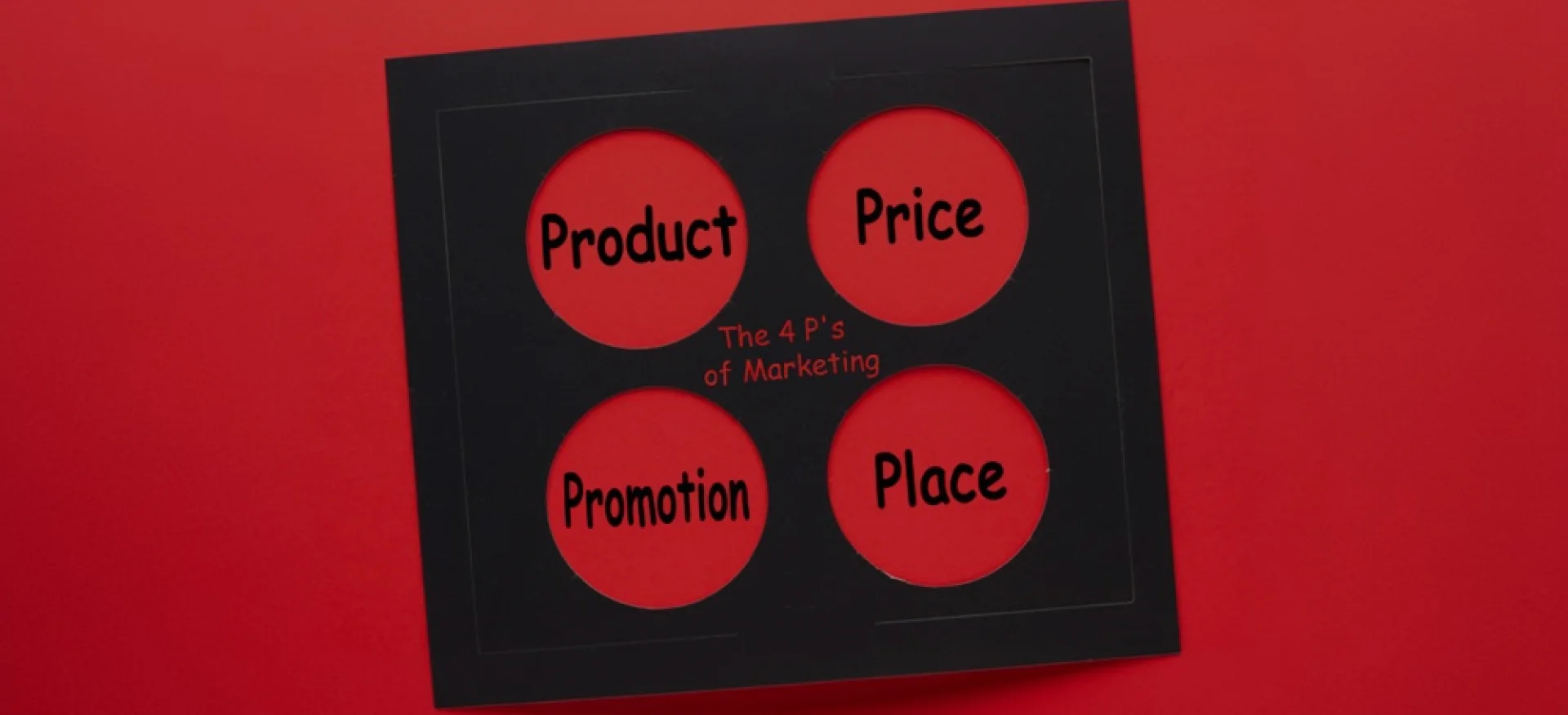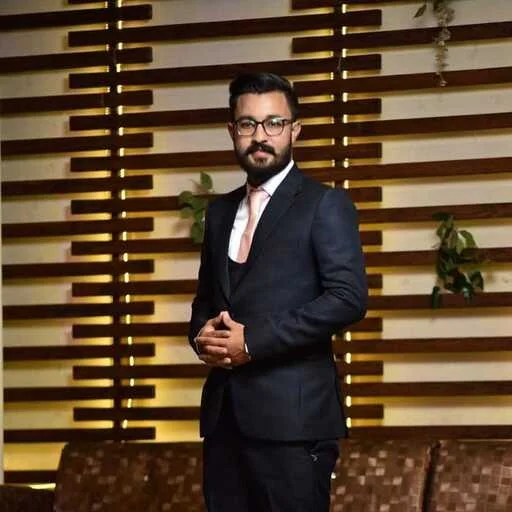Well, they’re the key elements that guide businesses in creating effective marketing strategies
The 4 Ps of Marketing, also called the Marketing Mix, are super important when it comes to creating marketing strategies that work.
The concept, introduced by E. Jerome McCarthy in the 1960s, is still relevant today as it ensures businesses align with customer needs while achieving their own goals. So, what are the 4 Ps of marketing? Let’s break them down:
So, here’s what each "P" means:
- Product is what you’re selling, whether it’s a physical item, a service, or a solution to a problem.
- Price is figuring out how much customers are willing to pay while also keeping things profitable for you.
- Place is about making sure your product is where your customers are, whether it’s in stores, online, or through distribution channels.
- Promotion is how you get the word out, think advertising, public relations, and sales promos to show off the value of your product.
When you balance these four elements, you’re setting yourself up for success in the market, connecting with your target audience, and boosting growth.
In this guide, we will discuss how the simple but powerful 4Ps of marketing make sure your strategy focuses on your customers while keeping business goals in mind.
What are five marketing strategies that retailers spend half of their annual budget on? These strategies, including digital marketing, product innovation, and promotional campaigns, can be better aligned through the 4 Ps to ensure a holistic approach to market success.
What are the 4Ps of Marketing?
The 4 Ps of marketing, Product, Price, Place, and Promotion, form the foundation of modern marketing strategy. These concepts were first popularized by Neil Borden, an advertising professor at Harvard, in the 1950s. Borden’s work on the marketing mix demonstrated how companies could effectively use advertising to engage their target audiences.
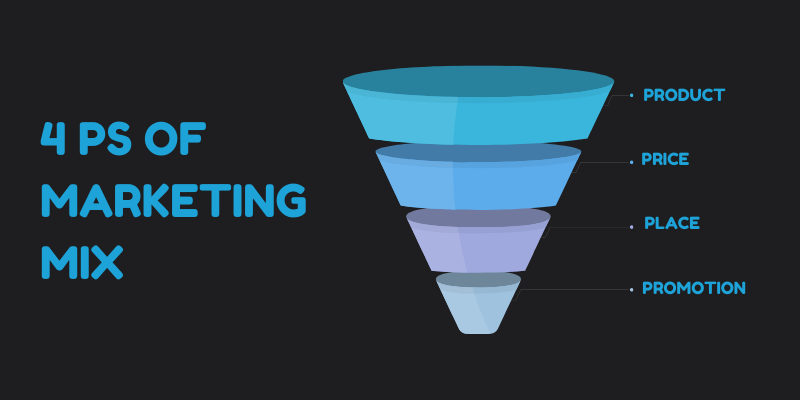
A few years later, E. Jerome McCarthy, a marketing professor at Michigan State University, refined Borden’s ideas and formalized them as the four Ps of marketing in his book Basic Marketing: A Managerial Approach. This framework became a critical tool for businesses to develop strategies for marketing their products and services.
At its core, the 4 Ps of marketing help companies address key aspects of their business operations:
- Product – The goods or services a company offers to meet consumer needs.
- Price – The value placed on the product or service, considering factors like cost, demand, and competition.
- Place – The distribution channels used to make the product available to consumers.
- Promotion – The tactics used to communicate the product’s value to the target market and persuade them to buy.
Over time, other concepts have expanded on the original 4 Ps, including People, Process, and Physical Evidence. These additions recognize the importance of human interaction, streamlined processes, and tangible cues in service-based industries, enhancing the traditional marketing mix to suit the modern business environment.
While the 4 Ps of marketing were originally designed to help businesses overcome physical barriers to product adoption, the rise of the internet has allowed companies to reach broader audiences and engage in more dynamic marketing strategies. Understanding what the 4 Ps of marketing are, and how they work together, remains essential for businesses looking to create successful marketing campaigns.
Explore Our Digital Marketing Services!
A Breakdown of the 4 Ps of Marketing Mix
While the 4 Ps of marketing were originally designed to help businesses overcome physical barriers to product adoption, the rise of the internet has allowed companies to reach broader audiences and engage in more dynamic marketing strategies. Understanding what the 4 Ps of marketing are, and how they work together, remains essential for businesses looking to create successful marketing campaigns.
Let’s explore each in detail.
1. Product in the Marketing Mix
What is being offered to the market, whether it’s a tangible good, service, or even an idea. Product marketing refers to the process of promoting and selling a product to the target audience.
It involves understanding customer needs and designing a product that fulfills those needs. In the context of the 4 Ps, Product represents the tangible or intangible goods that a business offers to the market.
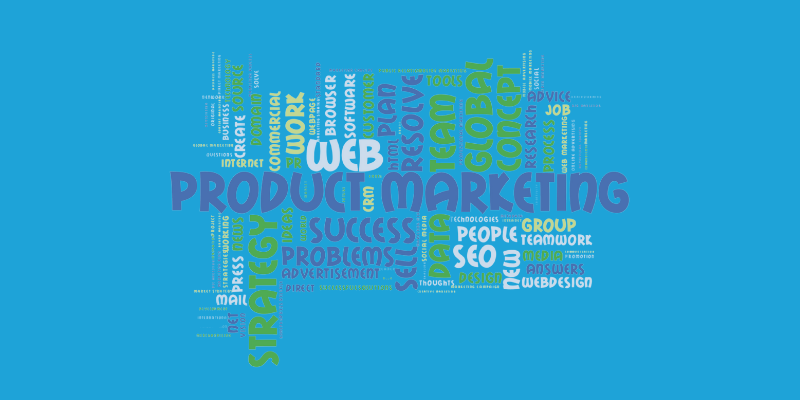
A product could be a physical item, a service, or even a digital offering, and it must provide value to the consumer, solving a specific problem or fulfilling a desire.
Key components of product strategy include:
- Features: The specific characteristics or functionalities of the product that distinguish it from others in the market.
- Design: The aesthetics and user experience associated with the product, making it visually appealing and easy to use.
- Quality: The standard of the product’s performance and durability, which can influence customer satisfaction and brand reputation.
- Brand: The identity and personality of the product, including its logo, name, and values, which shape how customers perceive it.
- Packaging: The way the product is presented to the consumer, including the design, materials, and functionality of its packaging, which can influence purchasing decisions.
2. Price in the Marketing Mix
The cost that customers are willing to pay for the product or service, which impacts both demand and profitability.
Price refers to the amount of money a customer is willing to pay for a product or service. In the context of the 4 Ps of Marketing, Price is crucial because it directly affects both the profitability of the business and the perceived value of the product.
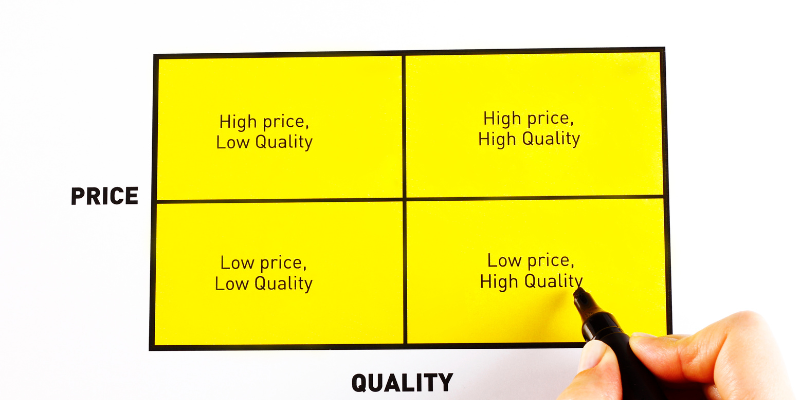
Setting the right price can influence customer behavior, demand, and competitive positioning.
Several factors influence the pricing decision for a product, including:
- Production Cost: The cost of manufacturing or creating the product, including raw materials, labor, and overhead. The price must cover these costs to ensure the business remains profitable.
- Market Demand: The level of demand for the product in the market plays a significant role in determining its price. High demand can justify a higher price, while low demand may require a price reduction to stimulate sales.
- Competitor Pricing: The prices set by competitors for similar products can impact how a business sets its own price.
If competitors offer similar products at a lower price, businesses may need to adjust their pricing to remain competitive, or they may differentiate their offering to justify a higher price.
3. Place in the Marketing Mix
The distribution channels and locations through which the product or service is made available to customers.

A digital transformation agency may assist in streamlining distribution channels to ensure products reach customers more efficiently.
In marketing, Place refers to the distribution strategy used to make a product available to customers.
It involves determining where and how a product will be sold, ensuring that it reaches the right customers at the right time and in the right location.
The Place element of the 4 Ps is crucial because even the best product with a perfect price and promotion strategy can fail if it is not accessible to the target audience.
There are several types of distribution channels that businesses can use to deliver their products to consumers. These include:
- Direct Sales: This involves selling products directly to customers without intermediaries. Direct sales allow businesses to maintain control over their brand and customer experience.
- Retail: In this channel, products are sold through intermediaries such as physical retail stores, department stores, or supermarkets. Retailers purchase products from manufacturers and sell them to the end consumers. This method provides a broad reach but involves shared control over the customer experience.
- E-commerce: With the rise of online shopping, e-commerce has become a critical distribution channel. Products are sold through online platforms like Amazon, eBay, or a business’s own website. This channel offers global reach, convenience, and the ability to tap into a growing market of online shoppers. In particular, ecommerce marketing service can be used to optimize online marketing strategies and improve customer engagement.
- Wholesale: In wholesale distribution, businesses sell products in bulk to wholesalers, who then distribute the products to retailers or other buyers. This method is effective for businesses looking to target larger retail outlets or other businesses.
Moreover, a channel strategy is how businesses decide where and how to distribute their products. The strategy is influenced by several factors, including:
- The choice of channel depends on where the target market shops or purchases similar products.
- High-end products may benefit from direct sales, while everyday goods may be better suited for retail.
- Businesses must decide if they want to focus on local, national, or international markets, influencing the choice of distribution channels.
4. Promotion in the Marketing Mix
The tactics used to communicate the value of the product and persuade customers to purchase it, including advertising, sales, and public relations.
In marketing, Promotion refers to the activities and strategies used to communicate the value of a product or service to the target audience and persuade them to make a purchase.

The Promotion element of the 4 Ps encompasses a wide range of tactics, including advertising, personal selling, public relations, and sales promotions, all designed to make the product visible and appealing to potential customers.
There are several key promotional strategies that businesses use to reach and influence customers:
- Advertising: Advertising is one of the most common forms of promotion, involving paid media channels to communicate the product’s benefits and create awareness. It can take many forms, including TV, radio, print ads, online banners, and digital video ads. Advertising is effective for reaching a large audience and building brand recognition.
- Sales Promotions: These are short-term incentives designed to encourage immediate purchases or boost product interest. Sales promotions create a sense of urgency, motivating customers to act quickly.
- Public Relations (PR): Public relations involves managing the image and reputation of a brand through media coverage, press releases, sponsorships, and events. PR activities help build credibility and trust with customers by portraying the company in a positive light. Unlike advertising, PR relies on earned media, making it a valuable tool for long-term brand building.
- Personal Selling: Personal selling involves direct interaction between a sales representative and a potential customer. It typically occurs in face-to-face or one-on-one settings, where the salesperson customizes the pitch and persuades the customer to buy.
- Digital Promotion: The growth of the internet and social media has revolutionized how products are promoted, allowing businesses to connect with customers in more direct and personalized ways.
With the rise of digital platforms, businesses often work with a tech marketing agency to develop performance marketing services, optimizing campaigns through online ads, search engine optimization (SEO), and social media strategies.
Explore Our Performance Marketing Services!
Example of the Four Ps of Marketing
To better understand the four Ps of marketing, let’s apply them to a fictional skincare company that produces organic skincare products. Here’s how the model can be utilized:
- Product: The company offers a variety of organic skincare products, including cleansers, moisturizers, and serums. These products are made with natural ingredients, free from harmful chemicals, and are designed to promote healthy, radiant skin.
- Price: The pricing strategy is positioned as premium, reflecting the high quality of the ingredients and the company’s commitment to sustainability. The premium pricing also aligns with the brand's positioning as a luxury, eco-friendly skincare provider.
- Place: The products are available through several distribution channels, such as the company’s website, select retail stores that specialize in organic products, and high-end spas and salons. This ensures the brand reaches environmentally conscious consumers looking for natural skincare solutions.
- Promotion: Promotional efforts are focused on highlighting the benefits of organic skincare, such as nourishment, hydration, and rejuvenation. This is achieved through social media campaigns, influencer partnerships, and educational content that emphasizes the importance of using non-toxic skincare products.
By considering these aspects, the company effectively leverages the four Ps in marketing to build its brand, attract the right customers, and drive sales.
The Role of the 4 Ps in Modern Marketing
As the business landscape constantly evolves with new technologies, digital platforms, and shifting consumer behaviors, the 4 Ps framework provides marketers with a solid foundation to adapt their strategies and stay relevant.
- Customer-Centric Approach: The 4 Ps allow businesses to tailor their marketing efforts to meet the specific needs and desires of their customers
- Holistic Strategy: By aligning product offerings, pricing strategies, distribution channels, and promotional tactics, businesses create a well-rounded marketing plan that enhances brand visibility and drives sales.
- Consistency: The 4 Ps ensure that all elements of a marketing strategy are aligned and work in harmony to deliver a consistent brand message.
That said, the 4Ps remain an invaluable tool in modern marketing, helping businesses stay competitive, customer-focused, and consistent in their strategies.
Now that you understand in depth, what are the 4Ps of marketing when applied to a real-world product or service.
How the 4 Ps Work Together in Real World Scenarios?
Apple serves as an excellent example of a company that effectively integrates all 4 Ps, Product, Price, Place, and Promotion, into a unified marketing strategy.
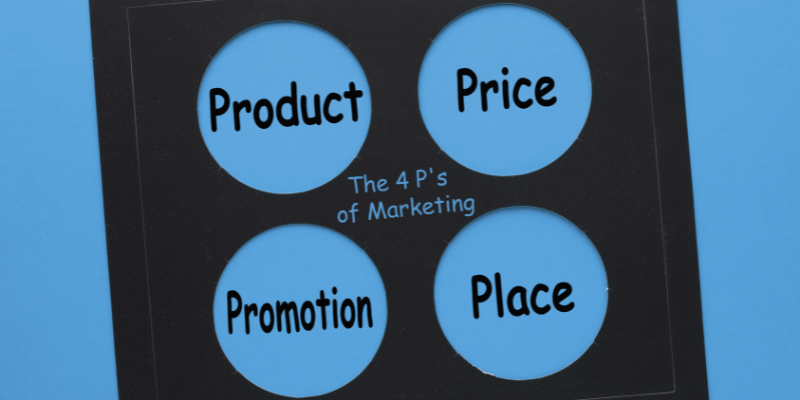
1. Product Strategy
Apple offers innovative, high-quality products like the iPhone, iPad, and MacBook.
These products are known for their sleek designs, advanced technology, and seamless integration into the broader Apple ecosystem.
The product itself plays a central role in Apple's appeal, combining functionality with aesthetic appeal.
2. Pricing Strategy
Apple uses a skimming pricing strategy, initially offering new products at premium prices to reflect their innovation and perceived value.
Over time, as newer models are released, Apple adjusts the prices for older models or different generations, making them more accessible while maintaining brand prestige.
3. Placement Strategy
Apple utilizes a combination of direct and indirect distribution channels. It sells its products through Apple Stores, its website, and third-party retailers like Best Buy.
This multi-channel approach ensures that Apple’s products are globally accessible and available to a wide range of consumers.
4. Promotion Strategy
Apple builds excitement and anticipation around product launches through various promotional strategies.
These include advertising campaigns, high-profile product launch events, influencer marketing, and targeted social media campaigns.
In this context, advertisement examples can demonstrate how Apple's campaigns effectively capture consumer interest.
Additionally, Apple consistently evaluates how to measure brand awareness through surveys and data analytics to ensure its promotions resonate with the right audience.
This integration of 4Ps drives demand, strengthens its brand identity, and positions Apple as a leader in the tech industry.
Explore Our Digital Marketing Strategy Service
Modern Adaptations of the 4 Ps
In response to the evolving marketing landscape, the 4 Cs Framework offers a more customer-centric approach than the traditional 4 Ps.
It shifts the focus from the product to the customer by emphasizing Customer, which highlights the importance of understanding their needs and preferences to create valuable products and services.
Cost moves beyond price to consider the total cost to the customer, including time, effort, and perceived value.
Convenience focuses on making the product easily accessible and user-friendly, addressing all aspects of the purchasing process.
Lastly, Communication emphasizes a two-way dialogue with customers, fostering relationships and engagement through personalized messages and customer service.
The 4 Cs ensure that marketing strategies are designed around customer needs, making it a more effective and personalized approach.
- Customer: Focus on understanding customer needs and preferences.
- Cost: Considers not just price, but the total cost to the customer.
- Convenience: Ensures easy access to the product or service.
- Communication: Engages customers through two-way dialogue and feedback.
The 4 Ps remain invaluable in modern marketing, helping businesses stay competitive and customer-focused.
However, with the rise of digital marketing and new technologies, many marketers have adapted the traditional framework.
The 4 Cs offer a more customer-centric approach to creating marketing strategies, emphasizing customer understanding and engagement.
Moreover, businesses today often leverage advanced tools, such as Google keyword ranking services, to track their digital marketing performance and ensure their product's visibility online.
Other Modern Marketing Mixes
Several modern variations of the marketing mix have been developed to reflect evolving customer needs and business environments. These include the Five Ps, Seven Ps, and Five Cs, each building on the core concepts of the traditional four Ps but introducing new elements.
The 5 Ps
The Five Ps, Product, Price, Place, Promotion, and People, focus on:
- Product: The goods or services offered to customers.
- Price: The cost to customers for acquiring the product.
- Place: Distribution channels to reach customers.
- Promotion: Communication strategies to inform and persuade the target market.
- People: The involvement of both customers and staff in the marketing process, emphasizing experiences, customer behavior, and overall satisfaction.
The 7 Ps
The Seven Ps, Product, Price, Place, Promotion, People, Processes, and Physical Evidence, expand on the Five Ps by adding:
- Processes: The operational methods and service delivery that shape the customer experience.
- Physical Evidence: Tangible elements like websites, store displays, and promotional materials that help customers visualize and engage with the product or service.
The 5 Cs
The Five Cs, Customer, Company, Competition, Collaborators, and Climate, shift the focus to external factors:
- Customer: Understanding the target market and their needs.
- Company: Assessing the company’s resources, capabilities, and positioning.
- Competition: Analyzing competitors' strengths, weaknesses, and market positions.
- Collaborators: Recognizing the role of external partnerships and alliances (e.g., suppliers, distributors).
- Climate: Evaluating the social, political, and economic conditions that affect the market.
Each of these models provides a unique approach to creating effective marketing strategies, considering both internal and external factors.
Explore Our Digital Transformation Services!
The 4 Ps vs The 4 Cs of Marketing
The 4 Ps and 4 Cs of marketing represent two distinct approaches to developing marketing strategies. The 4 Ps focus on the company’s perspective, while the 4 Cs take a more customer-centric view, shifting the emphasis from what the company is offering to what the customer experiences. Below is a detailed comparison of the two:
1. Product (P) vs. Consumer (C)
- 4 Ps (Product): The Product in the 4 Ps refers to what the company offers to the market, whether it’s a good, service, or solution. It focuses on features, design, quality, brand, and how it stands out in the market.
- 4 Cs (Consumer): The Consumer perspective, on the other hand, focuses on understanding the needs, wants, and preferences of the target audience. It emphasizes developing products that cater to the desires and pain points of consumers, ensuring they meet or exceed customer expectations.
2. Price (P) vs. Cost (C)
- 4 Ps (Price): The Price is the amount the company charges for its product or service. Companies typically set this based on production costs, competitors’ prices, and desired profit margins.
- 4 Cs (Cost): The Cost in the 4 Cs takes the consumer's perspective into account. It's not just about the product price but the total cost of ownership, including any hidden costs like taxes, shipping, and the emotional or psychological cost. It focuses on what the consumer is willing to pay, rather than just the company’s costs.
3. Place (P) vs. Convenience (C)
- 4 Ps (Place): Place refers to the distribution channels used to make the product available to consumers. It includes retail stores, wholesalers, online stores, and other points of sale.
- 4 Cs (Convenience): The Convenience factor focuses on how easy it is for the customer to find and purchase the product. It’s about offering the product in locations that are accessible to the consumer, whether through physical stores or digital platforms. The goal is to make the buying process as seamless as possible.
4. Promotion (P) vs. Communication (C)
- 4 Ps (Promotion): Promotion involves all the marketing tactics used to inform potential customers about the product and encourage them to buy. This includes advertising, sales promotions, public relations, and direct marketing.
- 4 Cs (Communication): Communication emphasizes two-way engagement with the consumer. Unlike the traditional one-way promotional tactics, the focus here is on building relationships and dialogue with customers through channels like social media, customer feedback, and personalized interactions. The aim is to foster trust and customer loyalty.
FAQ: What Are The 4 Ps Of Marketing?
What does the 4 Ps mean in marketing?
The 4 Ps of marketing are Product (what you're selling), Price (how much you're charging), Place (where it's sold), and Promotion (how you inform customers).
What are the 4 or 5 P's of marketing?
The 4 Ps can be expanded to 5 by adding People (employees, customers, and stakeholders involved in the process).
What are the 4 C's of marketing?
The 4 C's focus on the customer: Customer (needs and wants), Cost (total cost to the customer), Convenience (ease of purchase), and Communication (two-way engagement).
What are the 7Ps of marketing?
The 7 Ps include: Product, Price, Place, Promotion, People, Process (service delivery), and Physical Evidence (tangible elements like brochures or websites).
Conclusion
Now that you know what are the 4 Ps of marketing, you can craft a successful strategy for your business considering all the factors.
Each element plays a pivotal role in ensuring that businesses can effectively reach and satisfy their target customers.
Product represents the core offering that must meet customer needs and desires, whether it's a physical product, service, or digital solution.
Price is crucial for determining the perceived value of the product and influencing purchasing decisions, balancing profitability with customer demand.
Place focuses on making the product accessible to the customer through the right distribution channels, whether physical stores or digital platforms.
Lastly, Promotion involves communicating the value of the product to the target audience using advertising, public relations, and sales promotions.
When these four elements are aligned and work in synergy, they create a comprehensive strategy that drives brand success and business growth.
